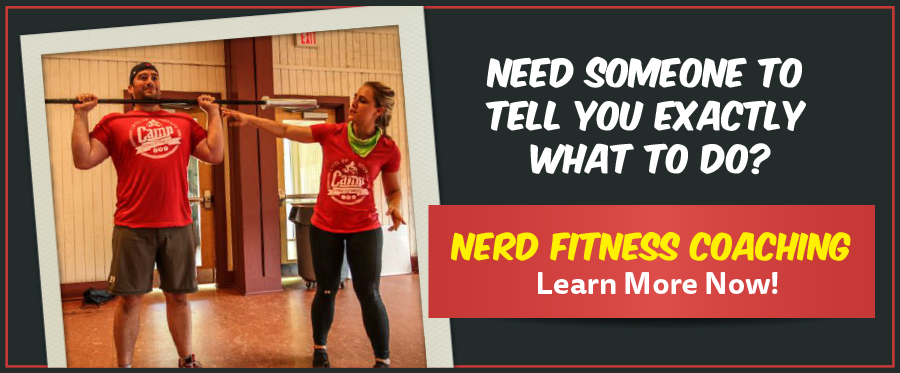Wednesday 27 February 2019
Monday 25 February 2019
How Many Calories Should I Eat Every Day? A Look at Total Daily Energy Expenditure (TDEE)
“Steve, how many calories should I eat every day? I got goals, son!”
Great question!
Knowledge is power, so today, we are going to make you more powerful.

First off, we’ll discuss your Basal Metabolic Rate (BMR) and your Total Daily Energy Expenditure (TDEE), which are fancy terms for how many calories you require on a daily basis to exist.
I’ll even give you two calculator options below – to determine your personal BMR and TDEE – plus I’ll show you how to use this information.
We’ll end today’s article by giving some practical advice on calorie requirements and weight loss, including a step-by-step plan, because I’m nice like that.
Let’s do this!
THE NERD FITNESS TOTAL DAILY ENERGY EXPENDITURE CALCULATOR
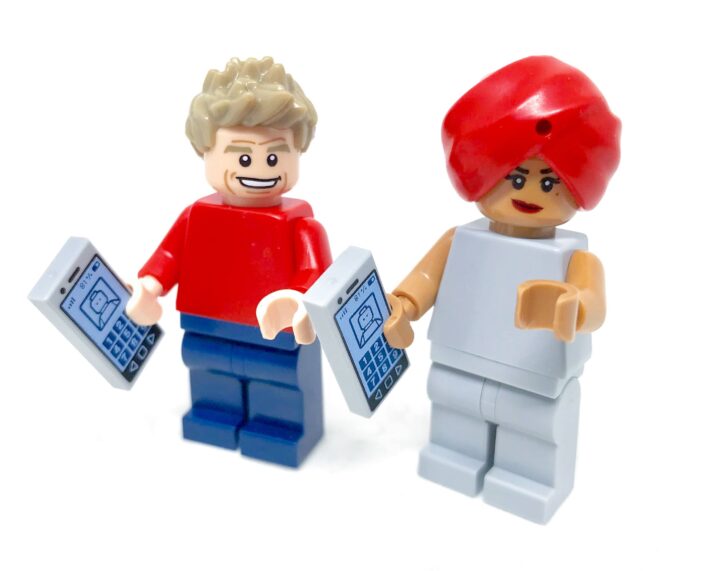
We’re going to start off by doing some math.
Don’t worry though, our robot calculator (beep boop boop) will do all the hard stuff for you.
We will need to know your height in inches, your weight in pounds, and an idea on your activity level (Use the metric system? I wish we did too here in the States! Click right here for our Metric calculator).
Although you can adjust it, I want you to set your “Activity Level” as “Sedentary,” (I’ll explain why in a minute):
Nerd Fitness Total Daily Energy Expenditure Calculator
(Note: we have used the The Mifflin-St Jeor Equation to create this calculator! [1])
Hooray! You now know your BMR and TDEE!
You may be thinking, “Ah, Steve, what do either of these mean?”
I got you boo. Make sure you write down your two numbers.
WHAT IS BASAL METABOLIC RATE (BMR)?
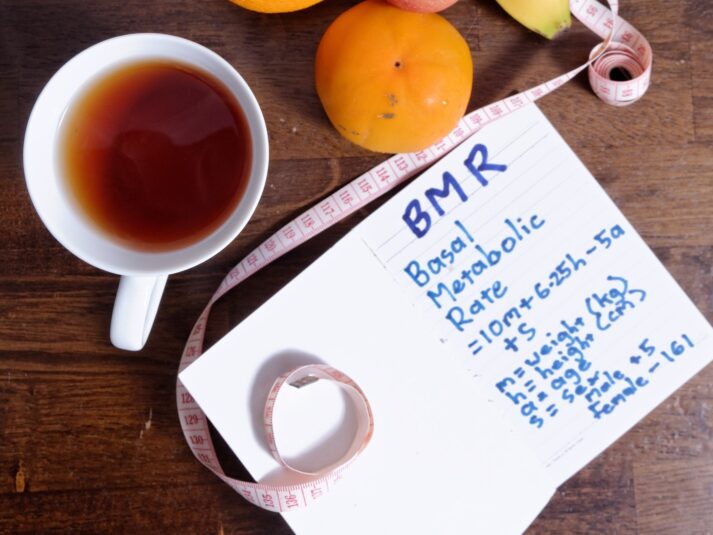
Basal Metabolic Rate (BMR) is the total amount of calories needed to keep you alive.
Breathing, cell production, pumping blood, and keeping your body temperature up all require calories to function.
When you sit perfectly still, you use plenty of calories keeping your body in good working order.
“Basal” more or less means “basic,” so you can think of BMR as the number of calories needed for basic daily functions.
Your sex, weight, and height will all affect the number of calories you need, which is why they are variables in our equation above.
The taller you are, or the more you weigh, the higher your BMR will be. There is simply more of you that needs calories. More blood to pump, more cells to produce, etc.
Roughly two-thirds of the calories you need each day go into keeping your body running.
The other third?
That goes into powering your motion. Because going from one place to another requires calories from your body. So does lifting stuff.
Let’s talk about Total Daily Energy Expenditure (TDEE) next.
WHAT IS TOTAL DAILY ENERGY EXPENDITURE (TDEE)?
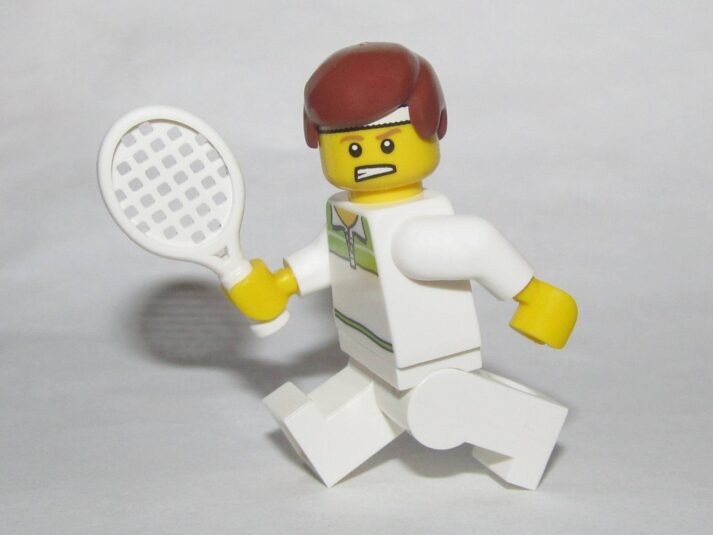
Total Daily Energy Expenditure (TDEE) is an estimate of how many total calories you burn in a day.
Since your BMR calculates the calories you need for a state of rest, we need to factor in movement and exercise to get an idea of how many calories you burn each day.
To do this, we’ll take your BMR and multiply it by an “Activity Level” factor.[2]
Activity Levels can be thought of as the following:
Sedentary. You get up to tell Netflix you are still watching. You don’t intentionally exercise at all.
Sedentary = BMR x 1.2
Lightly Active. You casually stroll through your neighborhood a few times a week. On average, you walk for exercise about 30 minutes a day. Another way to think about this would be 15 minutes per day of vigorous exercise like jogging or lifting weights.
Light Active = BMR x 1.375
Moderately Active. If we called the gym on a weeknight looking for you, they’d find you. This averages out to about one hour and 45 minutes of walking (for exercise, not going around your house) a day, or 50 minutes of vigorous exercise.
Moderately Active = BMR x 1.55
Very Active. You work in construction during the day and you’re on the company softball team. This averages out to about four hours and 15 minutes of walking (again, for intentional exercise) a day, or two hours of vigorous exercise.
Very Active = BMR x 1.725
If you’re following along at home, you may notice that different Activity Levels can make a big difference for the calories burned.
Let’s use some numbers:
Suppose you’re male, 35 years old, weigh 200 pounds and are six foot even (72 inches).
You’re also wearing a Nerd Fitness Shield Tee and it looks great on you. It really brings out your eyes.
Awesome shirt or no awesome shirt, we know your BMR comes in at 1,882 calories given the variables we identified. Which means you’ll need roughly 1,900 calories for basic bodily functions.
This is where things get interesting.
If you’re Sedentary, we’ll multiply 1,882 (BMR) by 1.2 to get a TDEE of 2,258. Which means you’ll need 2,258 calories to support bodily functions and to walk around your house, to go from your car to your office, from your office back home, etc.
Let’s imagine a scenario where you are not Sedentary. Instead, we’ll calculate that you are Lightly Active, meaning you walk around your neighborhood a few times a week.
We take your BMR of 1,882 and multiply it by 1.375 to get a TDEE of 2,588.
The difference between Lightly Active and Sedentary is 230 calories, about what you’d find in a glazed donut.
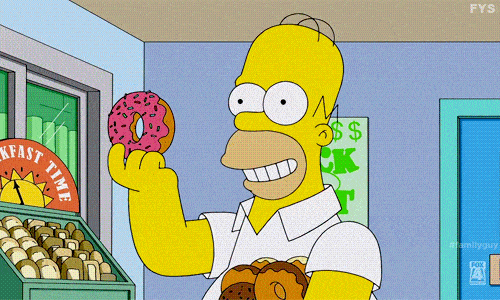
Let’s keep going.
Let’s say you hit your local gym a few times a week for strength training practice. And on your off days, you do a little yoga and take walks. This will push you into the “Moderately Active” category.
We take your BMR of 1,882 and multiply it by 1.55 to get a TDEE of 2,917.
The difference between Sedentary and Moderately Active would be 659 calories.
That’s an extra meal’s worth of calories! Here are some examples of things that are roughly 650 calories:
A whole meal’s worth of Sicilian fish with sweet potatoes:

Or, one Big Mac® with Bacon:
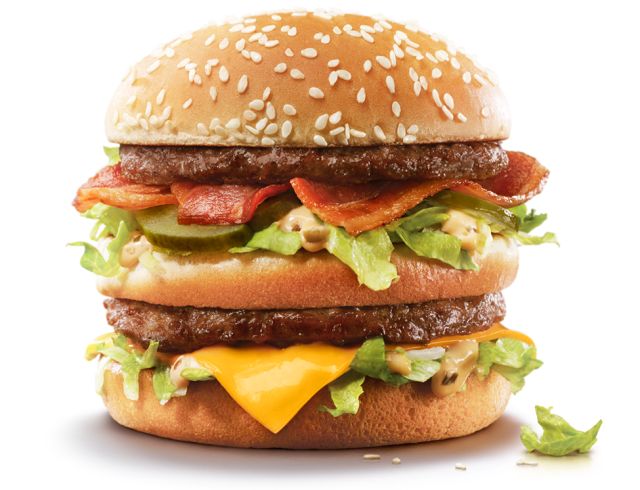
Or, one large Orange Dream Machine® from Jamba Juice:
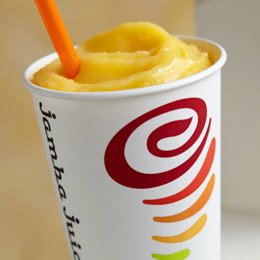
People often UNDERestimate how many calories they consume, and then OVERestimate how much exercise they’re doing.
This is why Activity Level could be a “trap” when doing TDEE calculations!

WHAT SHOULD MY ESTIMATED ACTIVITY LEVEL BE?
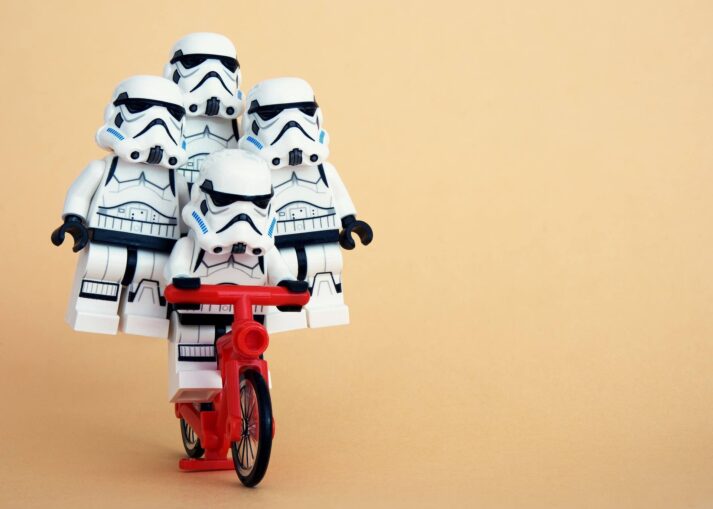
We people are notoriously bad at estimating our Activity Level.
We’re also terrible at tracking calories accurately and almost always underestimate (often by as much as 30-50%+ percent).
Study after study demonstrates that people evaluate their movement and exercise greater than what it actually is.[3]
We think we’re working out “intensely” for 60 minutes. However, when researchers look at stuff like heart rate, VO2 max, and calories burned, they determine that we actually only exercised “moderately.”
What’s this mean for you? If your goal is weight loss, pick an Activity Level below your initial guess.
Take our predisposition to overestimate Activity Level and grab the one beneath it.
Instead of “Moderately Active” pick “Lightly Active.”
This will give you a more accurate estimate of your caloric needs, and give you a larger margin for error when trying to lose weight!
The other thing to consider would be strength training.
As we mention in our “Lose Weight and Build Muscle” article, strength training requires a lot of calories out of your body, not only for the exercise itself, but also for rebuilding your muscle too.
In general, consider strength training to be “vigorous exercise,” which we highlighted above. If it takes 30 mins of walking a day to be “Lightly Active,” 15 minutes of daily strength training would roughly be equivalent.
If estimating your Activity Level and TDEE is starting to freak you out:
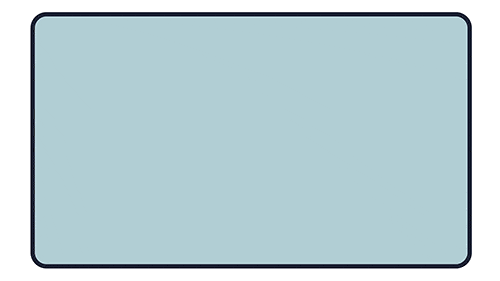
Trying to pick and calculate the right amount of calories to consume can be stressful. Especially if you’ve had trouble losing weight in the past. And that’s just the math part – we haven’t even got to the psychological part about how delicious pizza and ice cream are.
It’s actually the reason we created our uber-popular 1-on-1 Coaching Program. We sought to take all the guesswork out of getting in shape, by creating a program to tell you exactly what to do.
If you’re trying to lose weight, adjust your diet, or start a strength training practice, we can help! We work with busy people just like you level up their lives in a permanent and sustainable fashion. If you’d like to learn more about it, click on the big image below:
USING BMR AND TDEE FOR WEIGHT LOSS
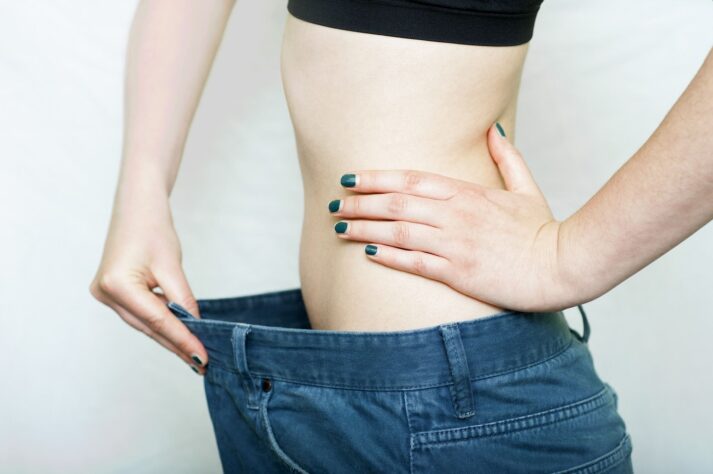
If you’ve read this far into the article, I imagine you are interested in learning your Total Daily Energy Expenditure for weight loss.
I also imagine you support my belief that The Shawshank Redemption is the best movie ever made:

I started this article by stating that if you are having trouble losing weight, it’s because you are eating too many calories.
The TDEE we calculated above will give us a good estimate of calories you require each day – if your scale is staying constant: congrats! You found your ‘calorie equilibrium.’ This means your body burns just as many calories as you consume each day.
However, I’m going to guess you’re here because your goal is to see the scale go down!
To really be able to utilize this number, we also need to have an idea on the number of calories we are consuming. Without knowing this, the TDEE is really just an arbitrary number.
Many would say the easiest way to assess and track calories consumed is with an app. We live in the future. Use a smartphone and download one of the following:
- My Fitness Pal. The gold standard of calorie counting apps. It’s also the most popular, supporting the largest food database in the game. Plus it can download recipes from the internet and provide an estimate of calories.
- FatSecret. Basic, simple, and free, FatSecret is a great calorie tracker. It’ll allow you to connect with other users, plus it’s got a barcode scanner for caloric content from labels. Super nifty.
- Lose it! Another free calorie counting app, focusing more on goal setting. Additionally, the Snap It™ feature lets you use pictures for data input. Double nifty.
You don’t have to use the app forever. A solid week’s worth of data will help you get a sense of the food you are consuming, especially if you eat roughly the same food each day. You can then compare this to your TDEE.
If you’re trying to lose weight, you need to have your calories consumed less than your TDEE on average.
Here are some numbers to think about: 3,500 calories equals roughly one pound of fat. There are seven days in a week. If you want to lose one pound of body fat in a week (a sustainable goal for some), you need to create a caloric deficit of 500 calories a day: either through consuming 500 fewer calories, burning 500 more calories, or a combination of the two.
Let’s imagine that your TDEE is 2,500. This would mean you’d have to consume around 2,000 calories a day to lose around a pound per week.
As we discuss to great detail in our “Why Can’t I Lose Weight” guide, sustained weight loss is largely a result of controlling the first half of the equation: “calories in.”
If you’ll remember, your BMR is about two-thirds of the total calories used, independent of movement. And most people overestimate exercise and underestimate consumption.
So controlling calories in is the most effective way to sustain weight loss.
Said another way, it’s much more difficult to increase your Activity Level than it is to reduce the calories you consume.
What’s the easiest way to eat fewer calories consistently? By eating REAL food.
Why? Because real foods are more likely to fill you up and satisfy your hunger while also keeping you under your calorie intake goal for the day!
MOVING TOWARDS A HEALTHIER WAY OF EATING
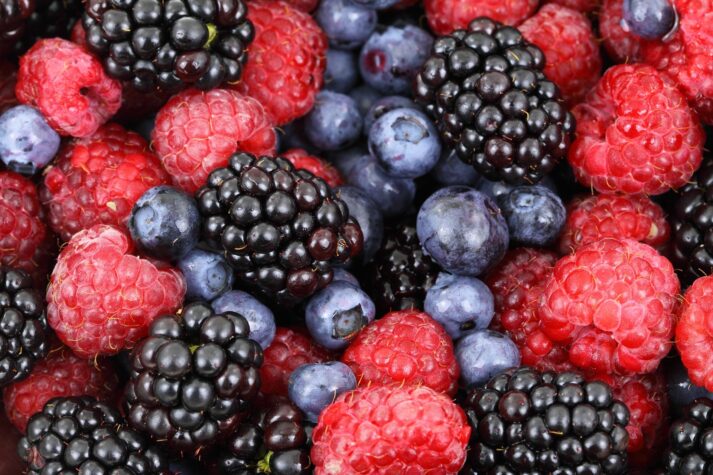
The Nerd Fitness philosophy on diet can be written in three words: Eat REAL food.
I lay it all out in our Beginner’s Guide to Healthy Eating, but you’re smart – you know what real food is:
Food that grew in the ground, on a tree, ran on the land, swam in the sea, or flew through the air. Meat, fish, eggs, vegetables, fruits, nuts are all great examples of REAL food.
This is what you should be eating more of.
The fine folks at WiseGEEK did an awesome post where they took pictures of what 200 calories of a certain food looks like.
200 calories of broccoli gets you enough broccoli to fill up an entire plate:
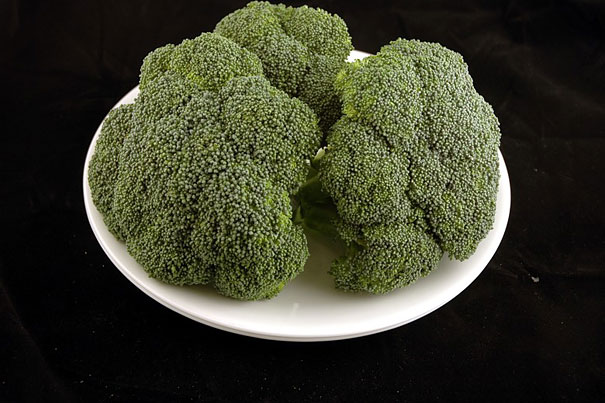
Or half a Snickers bar:
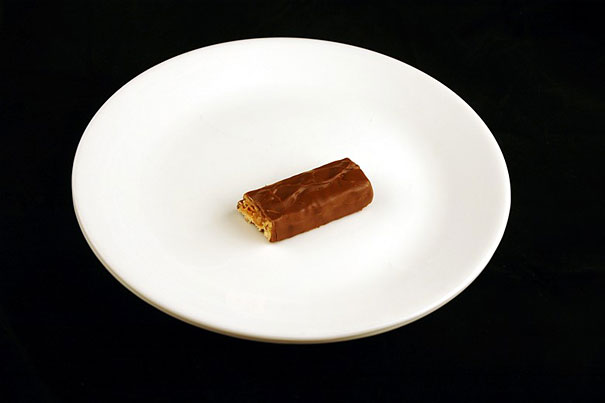
Yeah…
What I’m saying is by eating REAL food, you have a MUCH higher margin for error to stay under your calorie goal for the day.
If you “accidentally overeat Broccoli,” you might accidentally eat an additional 50 calories. If you accidentally overeat candy or soda or processed foods, you can consume an extra 500+ calories without feeling satiated or content.
If you want to create a caloric deficit consistently, REAL food is the answer. Before you get all huffy, I know a Snickers bar is way more delicious than broccoli – it was designed in a lab by scientists to be AMAZING!
I’m not gonna tell you to never eat a Snickers ever again either. Instead, you need to start being proactive about your food choices. If you’re gonna eat a Snickers, just plan for it (or adjust after) by reducing your calorie intake elsewhere.
If the scale isn’t budging – you’re still eating too much!
SHOULD I DO KETO OR PALEO FOR WEIGHT LOSS? WHAT’S THE BEST DIET

Should you do the Mediterranean Diet? Keto? Vegan? Paleo?
Maybe.
They all follow the same premise: by changing the foods you eat, you’re more likely than not to eat a caloric deficit without a struggle. Certain people respond better to certain diets than others.
So yes, any of those diets can help you lose weight – but you need to stick with the changes permanently to make the results stick permanently!
I personally follow a mental model diet, that focuses on real food all the time, and occasionally includes some junk food:
Minimize processed food – they’re designed for you to overeat them. Take a look again at that Snickers bar. Do you really think you’d only eat half of one to stick to 200 calories? Of course not. This argument is more or less the rationale for following a paleo diet.
Eat veggies. Vegetables are nutrient dense and light on calories. Because of all the fiber, they are also tough to overeat. Imagine eating all that broccoli. Are you going for seconds? Probably not. So eat your veggies to help keep you full. Hate vegetables? I once was like you. Read how I turned it around here.
Be wary of liquid calories. Cut back on soda, juices, smoothies, and any beverage with calories. Even most coffee orders (with sugar, cream, etc.) will have a ton of hidden calories. All these drinks are sugar bombs since there is no fiber to balance out all the carbs you are consuming. Stick to water, and unsweetened tea or coffee. Here are our thoughts on diet soda.
Prioritize protein. When your body heals itself, like after exercise, your body uses protein as the building block of muscle rebuilding. Outside of repairing your body, protein will also work to keep you full and satiated: 400 calories of chicken will leave you wayyy more full than 400 calories worth of Gatorade.[4] If you prioritize protein on your plate, you’ll be doing a lot of the heavy lifting on proper nutrition. Some great sources of protein include chicken, eggs, beef, pork, fish, nuts, legumes, quinoa, and most dairy products.
These four points will help you on your journey to create a caloric deficit.
Disclaimer: this is all easier said than done. After all, 70% of the country is overweight. Don’t worry though, because most of them don’t read Nerd Fitness. You do. This is like a strategy guide for life.
If you’re struggling with portion control and challenges, jump fully into the NF community. We cover human behavior and psychology to help you improve your environment, fix your habit building, and how to surround yourself with people that make you better (including our free message board community).
We’ve helped thousands of people like you here at NF, and we really focus on nutrition.
Like we said, it’s 90% of the battle!
It’s why we created our 10-level nutritional system. Each level gets a bit more challenging and healthier, but you can progress at your own speed to make your changes stick!
The name of the game here at Nerd Fitness is “consistency.”
You can download our 10-Level Nutrition Guide when you sign up in the box right here:
- Follow our 10-level nutrition system at your own pace
- What you need to know about weight loss and healthy eating
- 3 Simple rules we follow every day to stay on target
HERE’S WHAT TO DO TO LOSE WEIGHT WITH YOUR TDEE

Let’s recap this whole article for you, with some actionable steps:
- Determine your BMR and TDEE. This will be critical for computing your caloric deficit. They’re good numbers to keep in mind during the whole experiment. Calculate your TDEE here.
- Track everything, as is, for one week. Log everything you eat. No judgment. If you eat five slices of pizza in a night, count every slice. This step alone has helped many rebels turn their lives around. Consider a food tracking app or online tracker to educate yourself!
- Compare numbers. Where is your current caloric intake at? How does this compare against your TDEE? If your intake is higher than your TDEE, you’re likely gaining body fat. We want to flip the equation.
- Create a caloric deficit. The easiest and most sustainable way to do this is to eat REAL food. Sorry. Steve is going to tough love you on this one. And remember, a 500 calorie deficit a day could help you lose one pound of body fat in a week. REAL food is the easiest way to achieve this.
- Track progress. Continue to track caloric intake to ensure you expend more calories than you consume.
That’s it.
You can do this. I know you can because many of our readers have done it themselves.
However, I won’t lie to you, it’s not easy. Human biology is working against you.
But again, it is totally doable.
As I started this article off, knowledge is power. I hope you calculate your calorie requirements today and use this information to make actionable changes.
Knowing your caloric requirements is a great first step for a weight loss journey. You’re on the right track.
For the Rebellion!
-Steve
PS: If you want any help on the way, I’ll remind you of the Nerd Fitness Coaching Program. We can help you calculate your Total Daily Energy Expenditure and create a workable plan to keep your calories under it.
If you want to learn more, schedule a free call with our team to see if we are a good fit for each other, by clicking the image below:
PPS: Seriously, how great is The Shawshank Redemption? I could quote that movie all day long.
If you don’t agree…

###
All photo citations can be found right here.[5]
- Studies have shown the Mifflin-St Jeor Equation to be very accurate in determining BMR and TDEE
- Activity Levels for the Mifflin St Jeor Equation mirror those in the Harris Benedict Equation, which can be read here.
- You can check out one such study here, another here, and another here.
- You can read a study on the satiating power of protein right here.
- Photo source: Retirement, The Proposal, Basal Metabolic Rate, LEGO Tennis, TGIF, Diet, Berries, Plant Clone, Running
source https://www.nerdfitness.com/blog/how-many-calories-should-i-eat-every-day-a-look-at-total-daily-energy-expenditure-tdee/
Friday 22 February 2019
“What Is Creatine? How to Start Supplementing with Creatine”
Most supplements in the fitness world are a complete waste of money.
Some supplements aren’t even absorbed well, making for some expensive urine![1]
Others, like “weight loss pills,” can actually be outright dangerous.[2]
However, there are a few supplements which could be an exception to this rule.
And one of those supplements is creatine.
Creatine is one of the most popular and tested fitness supplements on the market.
Technically, it’s an amino acid derivative, but you don’t really need to know that.
That is, unless you are a chemist.
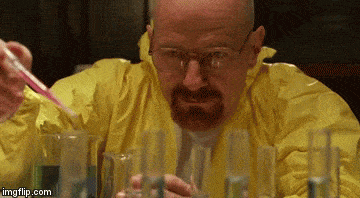
We get loads of questions here at Nerd Fitness on using creatine correctly, so today I’ll jump right in and give you the low down.
We’ll discuss everything you need to know about this supplement:
- What exactly is creatine?
- If you were to take creatine, how much should you use?
- What time of day is best for taking creatine?
- What are some of the best creatine supplements on the market?
Let’s go!
WHAT IS CREATINE?
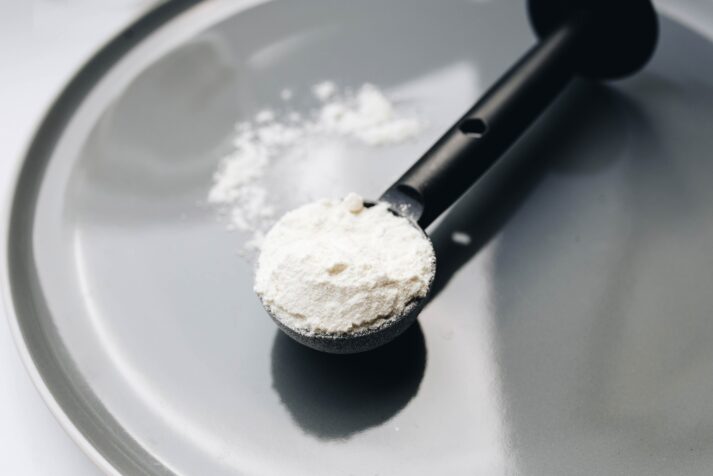
Creatine is a naturally occurring substance found in muscle tissue.
Right now you have creatine, specifically creatine phosphate, in your body. All vertebrate animals do.
Yes, even corgis.

Think of creatine as an energy reserve your body taps into when it needs a boost. Or like, an extra energy tank in Metroid or Mega Man.
Our bodies naturally produce creatine in our liver, pancreas, and kidneys.
We also obtain it from certain foods, because all vertebrate animals contain creatine in their muscles.
So if you eat meat, you are getting extra creatine in your diet. Red meat in particular (beef, lamb bison), has the highest levels of dietary creatine.
(Don’t eat meat? Cool. Read our plant-based guide.)
Outside of diet, people often supplement with creatine. It’s one of the more popular supplements taken, and in fact, is THE most popular supplement taken amongst college athletes.[3]
The reason people supplement with creatine: the more creatine you consume – whether through nutrition or supplementation – the more will be found in your muscles.
Why should you care? What does creatine do, exactly?
WHAT DOES CREATINE DO?
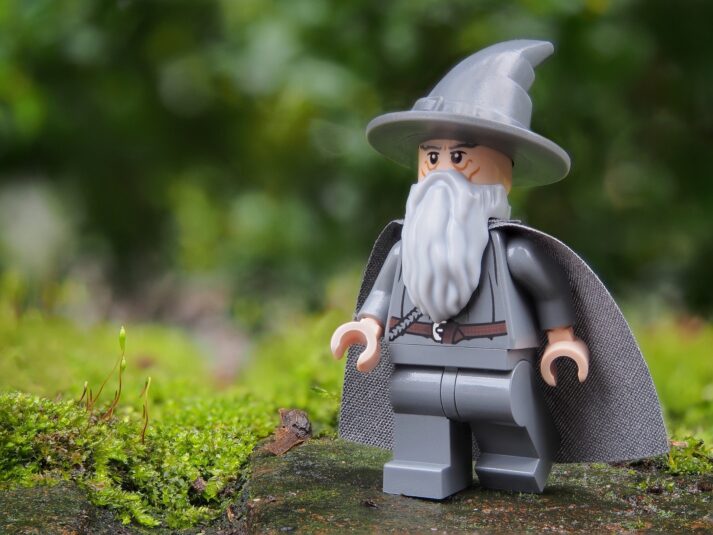
Science time! To discuss supplementing creatine with any justice, we need to talk about ATP.
All cells rely on adenosine triphosphate (ATP) for energy. It’s our body’s energy currency.
Sort of like “Mana” in World of Warcraft or Magic: The Gathering, ATP is a fuel tank for doing awesome things like running, doing pull-ups, or summoning lighting.

But much like “Mana,” ATP can be replenished only so quickly by your body. With intense enough exercise, you’ll use more ATP than your body can produce. Which means you’ll run out.
It’s why people can only sprint at 100% maximum effort for a short amount of time. You just plain run out of juice, or ATP.
And depending on how you are exercising, your body will replenish its ATP through one of three ways:
- Less than 10 seconds, for exercises like short sprints or heavy lifting, ATP is replenished with creatine phosphate stored in muscle tissue.
- 30 seconds to 2 minutes, for activities like swimming a few laps, ATP is replenished with glycogen found in your muscles.
- Greater than 2 minutes, ATP is replenished with oxygen and glucose. You can think of endurance activities for this stage.
I get it, there’s a LOT more to it than that (The three systems often blend into each other, so it’s not so clear cut).[4]
Why I bring all of this up: your body can quickly convert creatine to ATP (in seconds).
This means the more creatine you have stored in your muscles, the longer you can utilize the phosphagen system – short and intense energy – to produce ATP.
It’s math: the more creatine you consume, the more will be found in your muscles. The more creatine you have in your muscles, the longer you should be able to sprint at max effort (or lift heavy, etc.).
Granted, there’s a point where your muscles become saturated with creatine and your body can’t hold anymore.
We’ll talk about dosage and absorption rates shortly. But first…
WHAT ARE THE BENEFITS OF CREATINE?
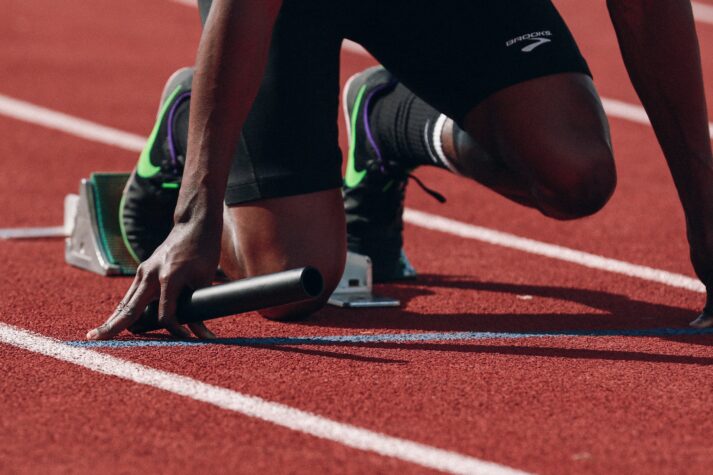
There is good evidence to suggest that creatine supplementation does, in fact, allow for longer periods of intense exercise by helping to produce more ATP. [5]
One such study found that supplementing with creatine for 28 days allowed users to increase their bike sprint by 15% and bench press performance by 6%.[6]
This is generally why people supplement with creatine. If you can produce more energy for more intense exercises, you can workout harder.
Instead of stopping at 10 reps because of exhaustion, perhaps you can squeeze out that 11th rep if you are storing more creatine. Or instead of slowing down your sprint at 10 seconds, you keep going until 12.
If you’re looking to improve physically, being able to achieve one more rep or just a few more seconds of a sprint can be critical.
Creatine has a boatload of other benefits too:
Cell signaling. Creatine has been shown to increase satellite cell signaling, which helps your body communicate its “needs” better. I personally picture a little cell crying out “help me, I’m broken” when thinking about cell signaling. However, improvements in cell communication can have an impact on muscle repair and growth.[7]
Cellular hydration. Creatine helps your muscles retain water, which helps them work more efficiently.[8] Hydrated muscles perform better than dehydrated muscles, so creatine as a performance enhancer seems appropriate.
Muscle growth. Creatine supplementation has been shown to increase the hormone IGF-1, which is needed for muscle growth.[9] In fact, the International Society and Sports Nutrition states “Creatine monohydrate is the most effective ergogenic nutritional supplement currently available to athletes in terms of increasing high-intensity exercise capacity and lean body mass during training.”[10]
Don’t get thrown off by the “creatine monohydrate.” We’ll talk about types of creatine shortly. Just know that creatine has been shown to aid in muscle growth.
Brain health. While not technically a muscle, your brain stores creatine. Can more stored creatine help with brain health?
There is research and evidence that suggests some conditions like Alzheimer’s, Parkinson’s, and epilepsy can all be helped by supplementing with creatine.[11] A creatine supplement might also help with memory and cognition in the elderly.[12]
Also, I have to highlight this study linking creatine supplementation with working memory and intelligence.[13] This makes sense because your brain also uses ATP, which remember, creatine helps produce.[14]
All of these studies are going to lead to a natural question…
SHOULD I SUPPLEMENT WITH CREATINE? IS TAKING CREATINE SAFE?
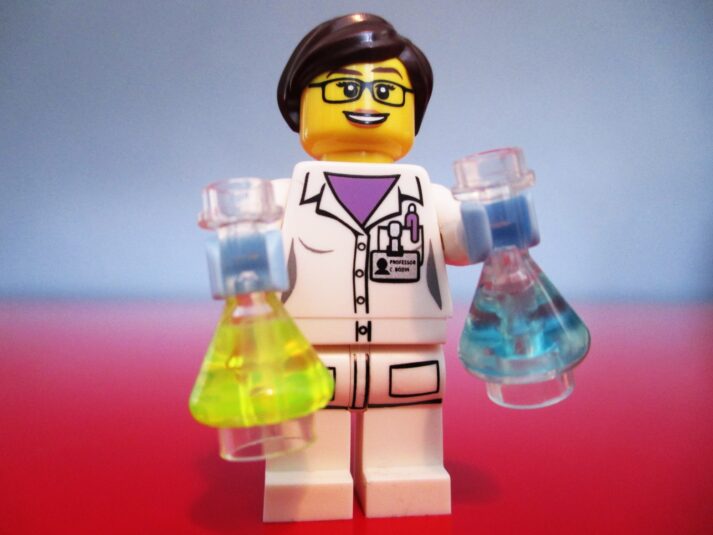
The use of creatine has been “extensively studied,” which makes my job of recommending it easy.[15]
The International Society of Sports Nutrition analyzed over 500 studies on creatine usage and concluded: “There is no scientific evidence that the short- or long-term use of creatine monohydrate has any detrimental effects on otherwise healthy individuals.”
However, we should acknowledge there is anecdotal evidence that taking creatine can cause kidney damage, dehydration, diarrhea, and an upset stomach.[16]
Kidney damage would be the most serious of these, let’s talk about that specifically for a moment.
Again, no study has been able to verify the claim of organ damage, and kidney function with creatine supplementation has been looked at specifically.[17]
However, if you have a history of kidney problems, it might be a good idea to talk to a doctor before you start supplementing with creatine. Better safe than sorry.
The other concern would be dehydration and diarrhea, which actually might have an easy cause and solution.
I mentioned earlier that taking creatine can help with muscle hydration. Because your muscles are holding onto more water, this leaves less water for other places. So if you start taking creatine, you should also increase your water intake!
Shoot for 16-18 ounces of water (a half liter) for every 5 grams of creatine you take. We’ll devote an entire section to dosage in just a moment.
It should also be noted, that being dehydrated puts extra stress on your kidneys. It can also cause diarrhea.
HOW TO TRAIN ON CREATINE

The reason creatine is so popular is because of its impact on athletic performance.
For you to receive most the benefits of supplementing creatine, you’ll need to work out. The creatine won’t lift that barbell for you.
The interesting thing about creatine: nearly any type of physical performance has been linked to improvement when combined with creatine supplementation:
Strength training. If you’re looking to grow strong, you need to lift heavy. Taking creatine has been shown to increase muscle strength.[18] In other words, taking creatine can help you lift slightly heavier or slightly more. If you do this consistently, you could start to achieve gains faster than you would without creatine supplementation.
This is the number one reason people take creatine.
Endurance. Despite creatine’s popularity for strength training, it can also be used as a tool for endurance athletes. That’s because creatine has been shown to increase glycogen stores.[19] If you remember our example from earlier on different metabolic ways to replenish ATP, you’ll recall that glycogen is a medium to long term energy source.
Meaning the more glycogen you have, the longer you can run. If you’re looking into improving an endurance sport, creatine might be worth checking out.
Recovery. Creatine has been shown to help reduce inflammation and muscle soreness.[20] Shorter recovery times, means you can get back to training sooner. More gym time can equal a stronger you.
No one likes being overtly sore. Creatine may help a little here.
When you start to learn more about creatine, it makes sense why so many athletes take this supplement.
However, I do need to mention that a majority of the benefits of creatine supplementation kick in with the conjunction of a regular exercise practice.
Supplements must be combined with a good solid workout! You don’t get big muscles or faster speeds from only protein and creatine.
They need to be combined with a proper training program!
If you’re not quite sure how to get going, I’ve got a few resources for you.
The first is our Beginner Bodyweight Workout.
It’s a circuit – where you quickly go from one exercise to the next – that you can start doing tonight in your living room or basement or spaceship. It’s one of our most popular routines here at Nerd Fitness, and it’s something you can do from your own home. No gym required.
If you want someone to help guide you – and hold you accountable – we can help with that too! We have an uber-popular 1-on-1 Online Coaching program where we work with busy people just like you to complete life overhauls. We can help you start strength training, offer nutrition recommendations, or provide you with accountability and structure to start working out from home. No matter where you need to go on your fitness journey, we can help guide you there.
If you want to learn if we are a good fit for each other, click on the big box below:
COMMON MISTAKES WHEN TAKING CREATINE
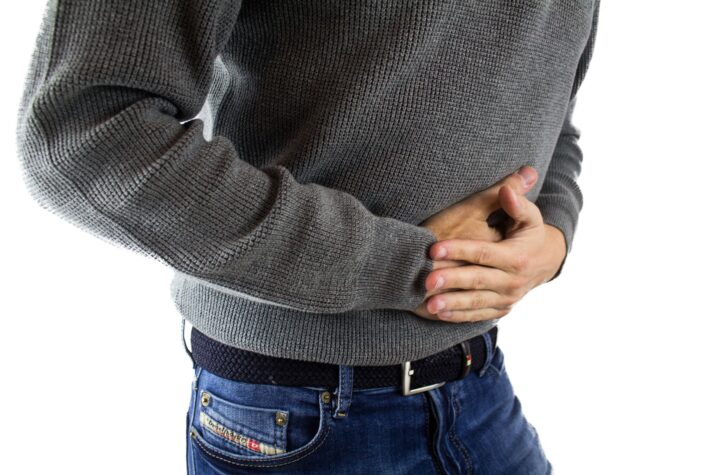
So far this article has more or less come out as an advertisement for creatine supplementation.
While there are a lot of great benefits of creatine, and not much in the way of studies showing harm, we need to talk about one potential downside.
Bloating.

Since creatine helps you retain water, you might feel a little bloated after taking it. Granted, hydrated cells perform better. But it can still be uncomfortable and cosmetically unappealing to hold onto a bunch of water.
The dosage and timing of taking creatine might be a factor, which we’ll talk about soon.
However, if bloating continues to the point that it’s interfering with your life, stop supplementing with creatine.
Speaking of creatine challenges, there’s also the fear that taking too much creatine could upset your stomach.[21]
We’ll get to proper dosage of creatine in just a moment, which might solve this.
It should be noted, that certain types of creatine are sold as “anti-bloating” and “easy on the stomach.”
Let’s talk about types and brands of creatine right now, by looking into these claims.
WHAT IS THE BEST CREATINE TO TAKE?
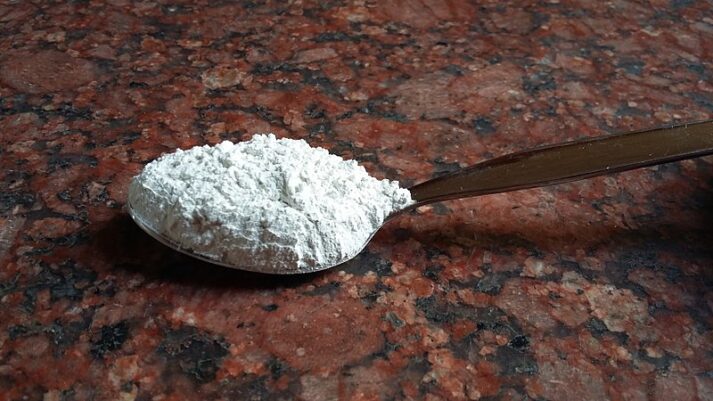
Creatine actually exists in multiple forms. We’ll go over each one briefly, plus give our recommendation on which type to take.
We’ll then leave you with a brand or two to try out.
First, some different types of creatine:
Creatine Monohydrate is the most common, and thus the most studied form of creatine.
It’s essentially a creatine molecule and a water molecule combined.
This would be the form of creatine we recommend. When we discuss the benefits and safety of creatine, we mean creatine monohydrate, because it’s the form that ends up being used in research.[22]
If there is a downside to creatine monohydrate, it would be that your body might have trouble absorbing all of it.[23] Which means you can pee a lot of it out. When people sell other types of creatine, they’ll generally claim their version has a better absorption rate.
Creatine Ethyl Ester is thought to be absorbed into the body easier than creatine monohydrate. There may be some evidence this is true.[24]
However, when it comes to body composition, creatine monohydrate still looks to be superior.[25]
Creatine Hydrochloride is another form of creatine that is touted as being absorbed easier than creatine monohydrate. You’ll also see claims that it won’t make you bloated.
Early evidence may back some of the claims of better absorption rates, but I would hold off on this form of creatine until more studies are done on its safety.[26]
Buffered creatine attempts to solve the stomach issues that are anecdotally reported as a side effect of creatine consumption. This form of creatine is mixed with an alkaline powder, with attempts to make it easier to digest. So far studies on the results of these benefits are mixed.[27]
Again, for now, I’d avoid buffered creatine until the research concludes its safety.
Hopefully, I convinced you to stick with creatine monohydrate. Again, it’s the most tested version of creatine there is, which makes it the most recommended.[28]
Want some recommendations on brands?
The brand of creatine monohydrate I personally take: Bulk Supplements.
dotFIT is another good brand for you to check out. MyProtein also carries a good choice. Both of those are creatine monohydrate options.
If you are going to take creatine, take creatine monohydrate. Which leads to the next question…
HOW MUCH CREATINE SHOULD I TAKE?
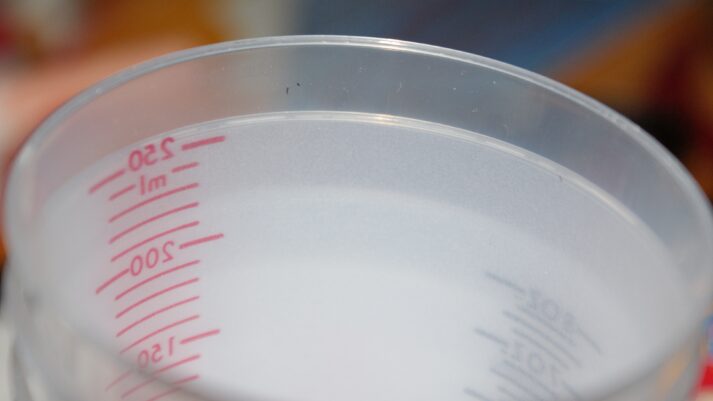
The question “How much creatine should I take?” will lead us to the topic of creatine loading.
The theory on creatine loading goes like this: at first, you’ll want to take more creatine so your muscles start storing it in greater quantities. Then you can taper off, as your muscles will already be saturated to their max with creatine phosphate.
Studies have shown this is the most effective way to increase creatine levels in muscle.[29]
Note, your results may vary, though the strategy below is well researched. Do what works best for you! I’m no doctor, nor do I play one on TV.
For 5 days, consume 20 grams of creatine per day to ‘load’ your muscles. After this period, then you can go to 3 to 5 grams of creatine per day.
If you’re concerned about taking 20 grams of creatine a day (more is not necessary or beneficial), the other strategy would be to just take 3 to 5 grams of creatine a day. In three to four weeks your creatine stores will be full.[30]
If you have stomach issues with 20 grams a day, forget about loading. Stick to 3 to 5 grams a day and you’ll be fine.
This is the strategy I employ: 5 grams of creatine on training days mixed in a small amount of water, consumed like a shot, immediately following my workout.
Which leads us to…
WHEN SHOULD I TAKE CREATINE?
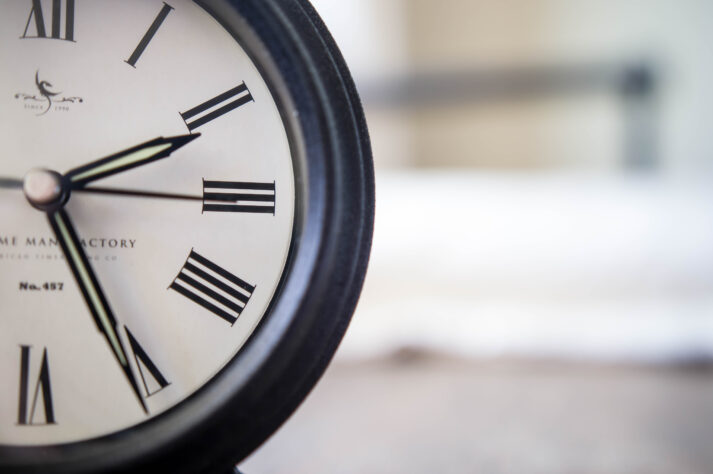
Studies demonstrating the best time of day to take creatine are mixed.
When it comes to “Should I take creatine before or after my exercise?” this study showed it didn’t really matter.[31]
It might be up to your personal preference on whether to take creatine before or after your training.
However, there is evidence you should take creatine somewhere close to when you exercise.
One study split subjects into two groups. The first supplemented with creatine immediately before and immediately after their exercise. The other took creatine first thing in the morning and again at night.
The study found the first group gaining the most muscle and strength.[32]
I would recommend taking creatine either before or after your training practice. Maybe split your intake and do a little bit of both. Take a mixture with you to the gym, start drinking it before working out and finish it right after.
On rest days, when you take creatine matters less. The point of taking creatine on a rest day is to keep the creatine phosphate content of your muscles raised for when you do workout next.
Take it whenever it is convenient on rest days. But take it close to when you workout on a training day.
THE VERDICT ON CREATINE

You don’t need to supplement with creatine.
If you’re eating a varied diet that includes a little bit of meat, you’ll be consuming and building plenty of creatine.
Our stance at Nerd Fitness: if you have a healthy diet, you don’t need to worry about any kind of supplementation. Eating nutrient dense foods like vegetables, fruits, and meat will provide you with all you need to thrive.
However, if you are strength training and looking to maximize your gains, a creatine supplement might be worth looking into.
There’s decent evidence in support of it allowing people to increase their athletic performance.[33]
And all of the downsides of creatine don’t appear to be supported by the data.[34] Although to be fair, more long term studies will be welcome on the safety of creatine supplementation.[35]
However, just to be safe, if you have any history of kidney trouble, make sure you talk to a doctor first before you start supplementing with creatine.
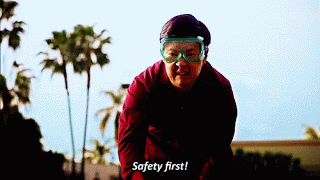
Okay, I think that about wraps up the article on creatine.
Now I want to hear from you:
Do you have experience taking creatine? What results did you see?
Does it sound like I’m being sponsored by the supplement industry? Or am I not praising creatine enough?
What other supplements would you like me to look into?
-Steve
PS: As a reminder, if you’re looking to take creatine for a boost in athletic performance, you need to actually train. If you don’t know where to start, we can help! We offer a 1-on-1 Online Coaching program to help busy nerds just like you level up their lives.
If you want someone to tell you exactly what to do, click on the big image below to find out if we are right for each other:
###
- Check out the Australian Medical Association’s take on multivitamins here.
- Here’s a report you can check out on the dangers of weight loss pills.
- Check out that report from the NCAA here.
- Whole degrees are created on this stuff and I just crammed it all into a few sentences. Don’t be mad at me, science nerds!
- Check out this study on creatine and ATP.
- You can review that study right here.
- Check out this study on creatine and cell signaling.
- Check out that study on creatine and cellular hydration right here.
- [Check out a study on creatine and IGF-1 here.
- Check out that report from the ISSN here.
- Check out these studies on creatine and Alzheimer’s, Parkinson’s, and epilepsy.
- Check out that study on creatine and cognition here.
- You can read that study over here.
- Another study on that right here.
- You can check out the full report from the International Society of Sports Nutrition right here.
- Check out Men’s Health for some claims about the downsides to creatine.
- Check out that report here.
- Check out one study demonstrating that right here.
- Check out a study done by Louisiana State University right here.
- Check out that report right here.
- Men’s Health talks about the anecdotal reports of negative reactions to creatine here.
- Check out this report on other versions of creatine.
- Check out an interesting study on the absorption of different kinds of creatine right here.
- Check out that study right here.
- Check out that study here.
- Check out an intriguing study on creatine HCI here.
- Check out a study comparing buffered creatine to creatine monohydrate here.
- Check out this report on different versions of creatine here.
- Check out this look at creatine loading.
- Check out the ISSN’s report for that statistic here.
- Check out that study right here.
- You can read that full report right here.
- Check out this report.
- Again, here’s the ISSN’s report.
- This study has an interesting warning on the need for more long term creatine studies.
source https://www.nerdfitness.com/blog/what-is-creatine-how-to-start-supplementing-with-creatine/


